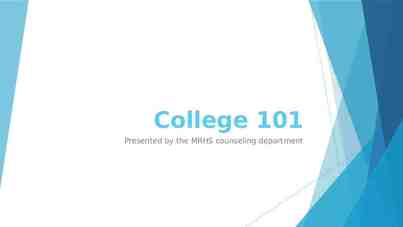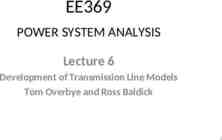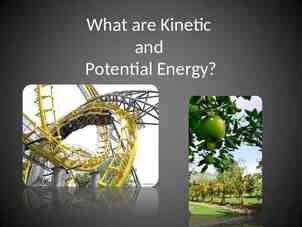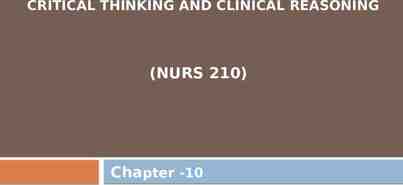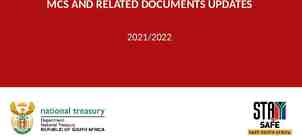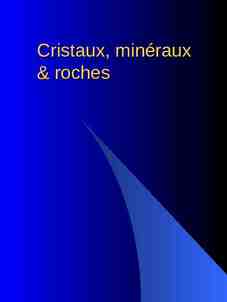Lecture 7: Knowledge Capture Systems Md. Mahbubul Alam, PhD
17 Slides388.09 KB

Lecture 7: Knowledge Capture Systems Md. Mahbubul Alam, PhD Associate Professor Dept. of AEIS Sher-e-Bangla Agricultural University

Chapter Highlights Describe what are knowledge capture systems Explain how to elicit and store organizational and individual knowledge Explain the two types of knowledge capture systems – To capture knowledge in educational settings – To capture tactical knowledge 2

What is knowledge capture systems? A process of eliciting explicit or tacit knowledge from people, artifacts or organizational entities. Rely on mechanism and technologies to support externalization and internalization. 3

Capturing Tacit Knowledge Organizational stories: – A detailed narrative of past management actions, employee interactions, or other intra- or extraorganizational events that are communication informally within organizations. Typically includes a plot, major characters, an outcome, and an implied moral. Originated within organization and typically reflect organizational norms, values, and culture. Stories make information more vivid,, engaging, entertaining, and easily related to personal experience. Contains rich contextual details, therefore, ideal for capturing tacit knowledge. 4

Organizational Storytelling: Guidelines Stimulate the natural telling and writing of stories. Rooted in anecdotal material reflective of the community in question. Should not represent idealized behavior. An organizational program to support storytelling should not depend on external experts for its sustenance. Organizational stories are about achieving a purpose, not entertainment. Be cautious of over-generalizing and forgetting the particulars. Adhere to the highest ethical standards and rules. 5

Organizational Storytelling: Important considerations Effective means of capturing and transferring tacit organizational knowledge. Identify people in the organization willing to share how they learned from others. Use metaphors to confront difficult organizational issues. Storytelling provides a natural methodology for nurturing communities because it: – builds trust knowledge seekers learn from knowledge providers. – unlocks passion – is non-hierarchical storytelling is collaborative. 6

Areas where storytelling can be effective Igniting action in knowledge-era organizations Bridging the knowing-doing gap Capturing tacit knowledge To embody and transfer knowledge To foster innovation Enhancing technology Individual growth Launching/Nurturing communities of practice – – – – thematic groups (World Bank) learning communities or learning networks (HP) best practice teams (Chevron) family groups (Xerox) 7

How to organize & use stories: Techniques Anthropological observation – Naïve interviewers – Caused the subjects to naturally volunteer their anecdotes – Curiosity resulted in a higher level of knowledge elicitation. Storytelling circles – Formed by groups having a certain degree of coherence and identify. – Methods: Dit spinning(fish tales) represents human tendencies to escalate or better the stories previously. Alternative histories Shifting character or context Indirect stories character similarities with the real-life character are considered to be pure coincidence. Metaphor common reference for the group to a commonly known story, cartoon or movie. 8

Knowledge representation: Concept Maps Based on Ausubel’s learning psychology theory. Concepts, enclosed in circles or boxes are perceived regularities in events or objects designated by a label. Two concepts connected by a linking word to form a proposition, semantic unit or unit of meaning. Vertical axis expresses a hierarchical framework for organizing the concepts. Inclusive concepts are found at the top, progressively more specific, less inclusive concepts arranged below. Relationships between propositions in different domains are cross-links. 9

Concept Maps 10

Knowledge capture systems: CmapTools To capture and formalize knowledge resulting in context rich knowledge representation models to be viewed and shared through the Internet. Alleviates navigation problem with concept maps. Serve as the browsing interface to a domain of knowledge. Icons below the concept nodes provide access to auxiliary information. Linked media resources and concept maps can be located anywhere on the Internet. Browser provides a window showing the hierarchical ordering of maps. 11

Knowledge Representation: Contextbased Reasoning Tactical knowledge Human ability that enables domain experts to assess the situation at hand (therefore short-term) among a myriad of inputs. Select a plan that best fits current situation, and executing plan Recognize and treat only the salient features of the situation Gain a small, but important portion of the available inputs for general knowledge. Therefore, tactical knowledge can be defined as “the continuous and dynamic process of decision making by a performing agent (human or otherwise) who interacts with his/its environment while attempting to carry out a mission in that environment.”. 12

Context-based Reasoning (CxBR): Principles & Tool 1. 2. 3. Context-set of actions and procedures that properly address the current situation. As mission evolves, transition to other context may be required to address the new situation. What is likely to happen in a context is limited by the context itself. Mission Context-defines the scope of the mission, its goals, the plan, and the constraints imposed. Main Context-contains functions, rules and a list of compatible subsequent Main Contexts. Sub-Contexts-abstractions of functions performed by the Main Context which may be too complex for one function. Tool: Context-based Intelligent Tactical Knowledge Acquisition (CITKA) Uses its own knowledge base to compose a set of intelligent queries to elicit the tactical knowledge of the expert. 13

Context Hierarchy 14

Barriers to Use of Knowledge Capture Systems Two perspectives 1. Knowledge Engineer (who seeks to build such systems) Requires developing some idea of the nature and structure of the knowledge very early in the process. Must attempt to become versed in the subject matter, or the nature of knowledge. An automate system for knowledge capture without a-priori knowledge of the nature, is essentially not possible. 2. Subject matter expert (who would interact with an automated knowledge capture system to preserve his knowledge) Need to take the initiative of learning how to interact with the system. Some people may be resistant to trying new things. Can be overcome, with adequate training and the utilization of user-friendly interfaces. 15

Learning by observation capture knowledge Research on how humans and animals learn through observation. Use of learning through observation to automate the knowledge acquisition task. Learning by observation shows promise as a technique for automatic capture of expert’s knowledge, and enable computers to automatically “learn”. 16

Question Please ?

